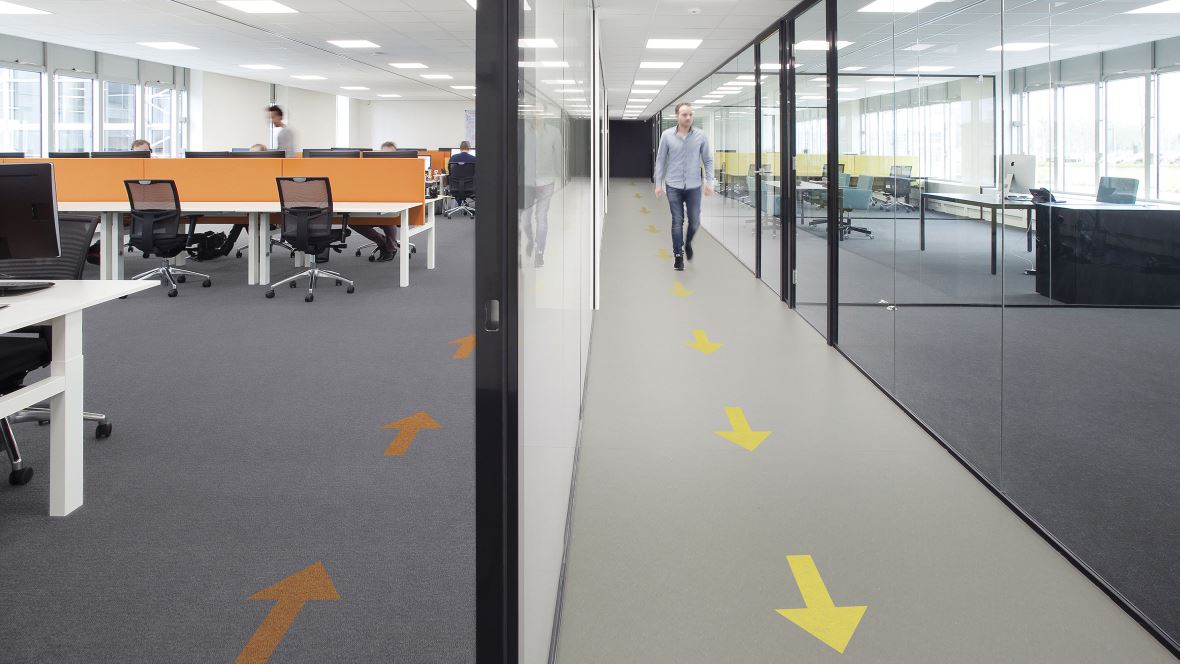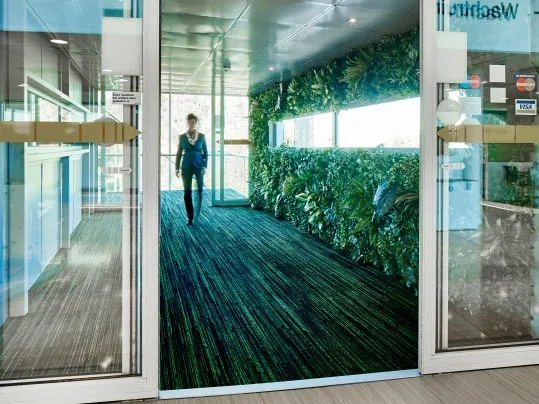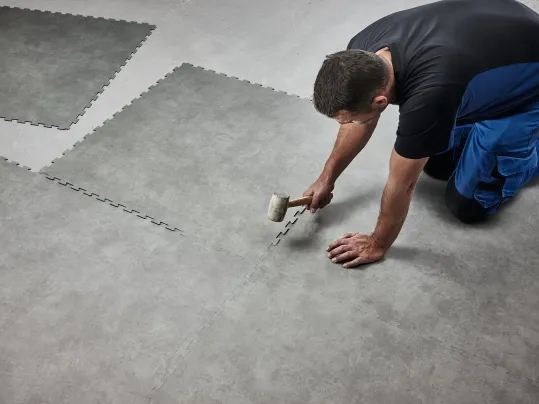The Future of Workspaces
Floored It Blog Series
July 2020

The speed in which the world has changed over the last few months has been staggering, and this of course has affected the office space and the way that we work. We catch up with our Segment Marketing Manager for the Office Sector, Donna Hannaway, to discuss what the Future of Workspaces might look like.
As I write this, it is Monday morning and we are entering another week working from home. The speed in which the world has changed over the last few months has been staggering, and this of course has affected the office space and the way that we work. In fact, I am currently sitting at my dining room table with my two-year old little girl playing behind me. Albeit strange at first, this has now become the norm. While we continue to work from our makeshift home offices, it is difficult to predict what the new ‘normal’ will look like post-COVID-19, as many businesses will need to rethink the future of the physical workplace.
.png)
The latest Work from Home survey from Gensler suggests that 70% of people surveyed would want to come back to the office, but only if significant changes are in place to make them feel comfortable returning. This includes ensuring there is more space for physical distancing, a reduction in shared spaces and increased cleaning. The top reason employees want to come to the office is indeed, for the people, as three out of four respondents cited that this was what they missed most about the physical office. Seeing your colleagues allows for scheduled meetings, socialising and impromptu face-to-face interaction, which is so fondly missed whilst working from home.
For me, working from home has its benefits, both from a productivity and lifestyle perspective. Ticking through my to-do list without getting too distracted and cutting out commuting gives me more free time to spend with my family.
However, it is the social aspect that I do miss the most. I miss seeing my team every day, the constant conversations floating around the office (work and non-work related) and being able to quickly ask my colleagues a simple question, without having to send it across in an email.
But what will office design look like when businesses are eventually allowed to reintroduce employees back to the workplace? As social distancing is here to stay while the virus remains active within society, this could mean working on a rota-basis to control the number of people inside the building at any one time. For us at Forbo, it is likely that we will only use the office for brainstorming sessions, new product development meetings and to see and feel flooring prototypes.
Siri, Google and Alexa have transformed the way we think about virtual assistants and their ability to handle mundane tasks for us in recent times - how handy would it be if you could use your voice to “unlock my office”?

Many businesses so far have been reliant on touch technology – kiosks that require navigation via touch, conference room booking screens outside of the door, sign-in tablets, or even biometric fingerprint scan. However, all of these conveniences might start to look like health risks in light of the coronavirus. Gensler propose that one way to overcome this is to reduce the dependence on shared devices and shift control of the workplace environment to each person’s smart device. This may not have the ‘cutting-edge’ appeal of other technologies, but it greatly reduces the chance that a virus can spread via touch.
Furthermore, the designers also suggest considering gesture for non-secure access control or situations where using a personal device to interact would be cumbersome or disruptive. Waving your hand to trigger an automatic door, for example, removes the need to touch handles or a physical button.
Reconsidering the design of the office environment might also involve a change of flooring and products that enable a quick refurbishment are ideal during this period, both in terms of downtime and tradespeople not having to stay on site for too long. While the vast majority of offices currently remain closed, it is important that facilities are not left to deteriorate and they should be ready to be brought back into use quickly and safely. Products from the Fast Fit collection, for example, are rapid to install.
Products that will help to reiterate the need to keep socially distant from colleagues will also need to be incorporated. This can be achieved in a number of ways. For example, different floor coverings can be used to identify zones or shapes can be used to indicate two metres of distance, such as through the use of circle tiles. Forbo’s Allura 50x50cm tiles can be cut into a circle of Ø40cm and these can be mixed and matched with other circle tiles in the collection. Offices can also print messages on the floor through social distancing entrance mats to support everyone’s efforts to keep safe.

Forbo Allura Puzzle in 62523 grigio concrete
Allura 62419 nero concrete with 63574 pink coral circles
Finally, one-way systems may well become the norm within office environments to aid wayfinding and ensure that employees are navigating the building safely and efficiently. Forbo has also developed a new service which allows specifiers to choose carpet tiles that feature directional arrows within the Tessera Layout and Outline carpet tile design, or have loose arrows cut into existing resilient installations or resilient materials.
The concerns and complexities that now exist as a result of the COVID-19 pandemic means that it is difficult to predict when and if office life as we know it will resume again. However, it is clear that the way that we work and how we use our office spaces is going to be different for the foreseeable future and as we begin to adapt to this new working landscape, it is essential that offices remain safe, clean and operational for its employees.
Would you like to know more about how the design of the workplace can influence well-being and productivity? Download our whitepaper here
If you would like to discuss any of the above solutions in more detail, simply fill in our Online Consultation request form and we'll be in touch.
Request an Online Consultation
All content provided within this blog is for informational purposes only and was correct at the time of being published. For the most up to date rules and regulations within England regarding COVID-19, please refer to the Government’s website, which you can find here . For all other countries, we encourage you to follow the advice set out by your local government.